William Morris, “el padre de las artes y la artesanía”
Si piensa en un "pionero del diseño moderno", lo más probable es que los primeros nombres que le vengan a la cabeza sean Charles y Ray Eames, Le Corbusier o Mies van der Rohe. Pero uno de los modernistas más influyentes de la historia del diseño es, en realidad, alguien que trabajó casi un siglo antes que los herederos de mediados de siglo: William Morris.
Descubra las camisas con estampados de William Morris Todos
¿Quién fue William Morris?
William Morris nació en 1834 en el seno de una familia acomodada de un pueblo del este de Londres. Su paso por la Universidad de Oxford, donde estudió arquitectura, arte y religión, marcaría enormemente su vida personal y su obra.
Fue en su época de estudiante cuando conoció las ideas de rechazo a la industrialización y retorno a los oficios de John Ruskin; de pintores prerrafaelitas como Dante Gabriel Rossetti, Edward Burne-Jones, Ford Madox Brown o el arquitecto neogótico Philip Webb; o desarrolló su interés literario por la poesía con el Conjunto de Birmingham, con William Fulford, Richard Watson Dixon, Charles Faulkner y Cormell Price.
El movimiento medievalista británico de la segunda mitad del siglo XIX fue una forma de romanticismo que rechazaba muchos de los valores del capitalismo industrial victoriano en contraposición a una época con fuertes valores caballerescos y un sentido orgánico y precapitalista de comunidad. Influenciado por la arquitectura medieval de la ciudad y en un contexto de creciente romanticismo y medievalismo en Europa, Morris construiría todo su discurso y práctica artística en torno a los valores de esta época.
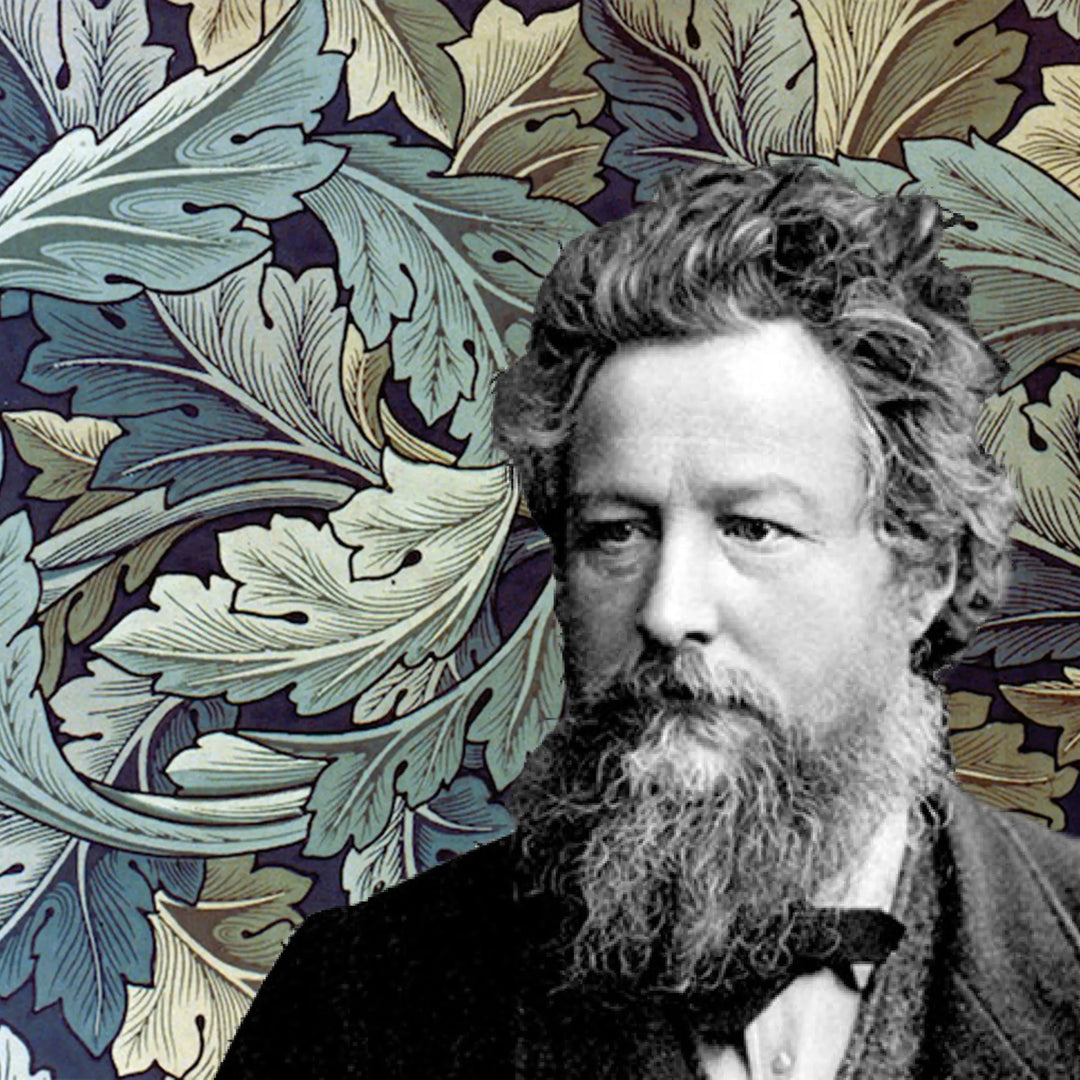
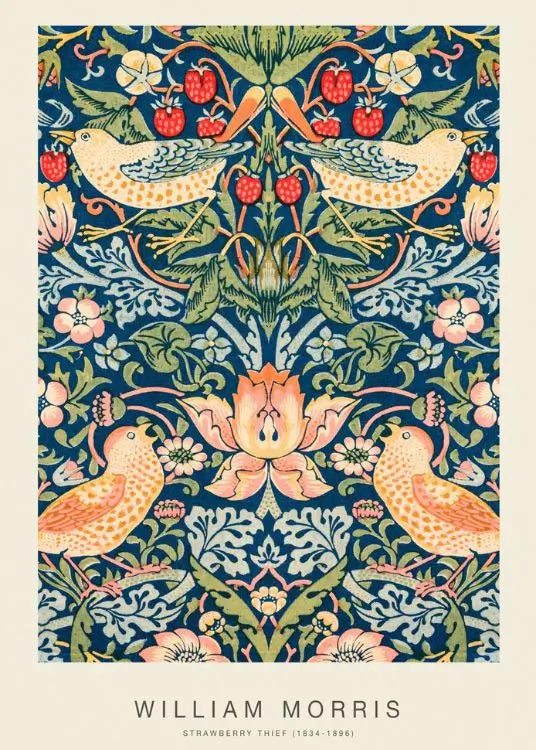
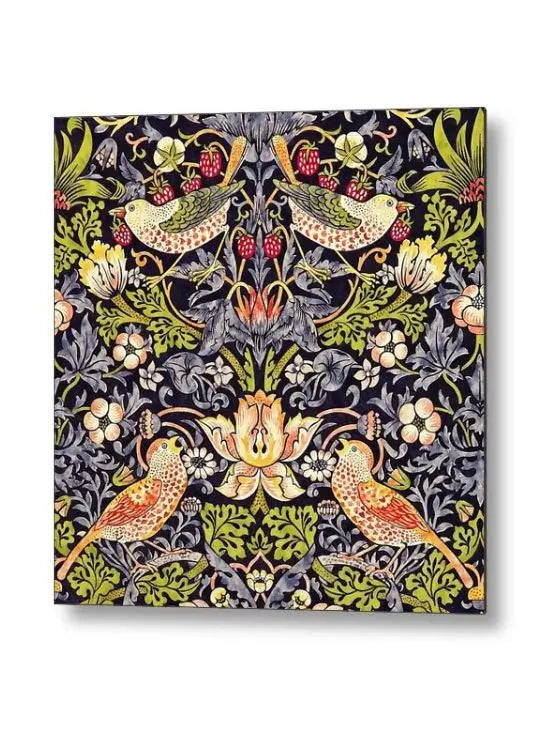
"El ladrón de fresas"
Una de las creaciones más famosas de Morris es "Strawberry Thief", que se inspiró en su propio jardín de fresas en Kelmscott Manor, en el Reino Unido. La obra de arte retrata a un tordo robando fresas en medio del jardín. Morris sentía un cariño especial por estos "ladrones", lo que lo impulsó a crear esta obra maestra.
El estilo "Strawberry Thief" refleja la estética característica del movimiento Arts and Crafts, que buscaba recuperar la belleza de las artesanías tradicionales y los objetos hechos a mano. Morris se inspiró en motivos naturales y botánicos para crear sus diseños, y "Strawberry Thief" demuestra su capacidad para capturar la belleza de la naturaleza en un estilo decorativo y detallado.
Este cuadro también es importante porque representa el interés de Morris por proteger el medio ambiente y preservar la vida silvestre. Los pájaros representados en el cuadro simbolizan la libertad y la naturaleza salvaje, mientras que las fresas simbolizan la riqueza y la belleza de la tierra. A través de su obra, Morris quería crear una conexión más profunda entre el hombre y la naturaleza, y "Strawberry Thief" es un ejemplo de su compromiso con este ideal.
"Hoja de acanto"
"Hoja de acanto" (1875), la hoja de acanto es sin duda el patrón decorativo representativo más importante de Occidente, ya sea barroco, renacentista o gótico. Las hojas de acanto crecen en el mar Mediterráneo en el sur de Europa. Tienen una elegante postura rizada y simbolizan la armonía familiar. Aunque el estampado "Hoja de acanto" es una obra de diseño bidimensional, Morris sigue utilizando técnicas realistas para lograr un fuerte efecto de capas a través de cambios de color de diferentes elementos. El cuadro en su conjunto está lleno de vida y ritmo, creando una nueva primicia en el diseño de patrones.
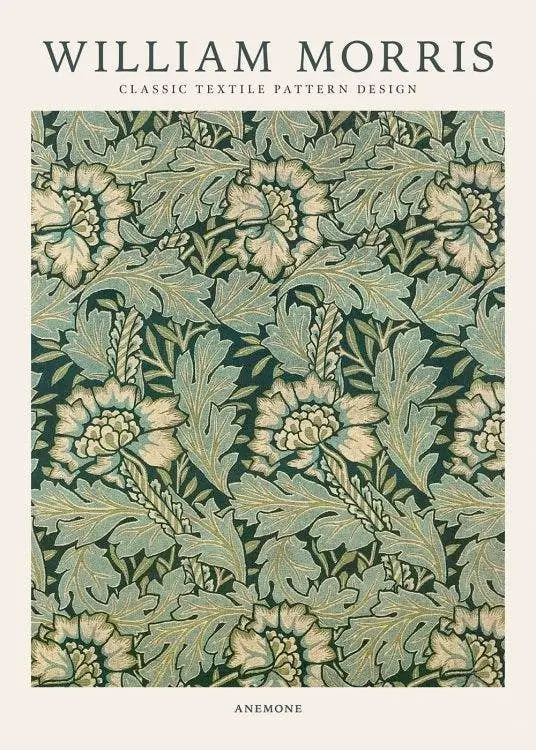
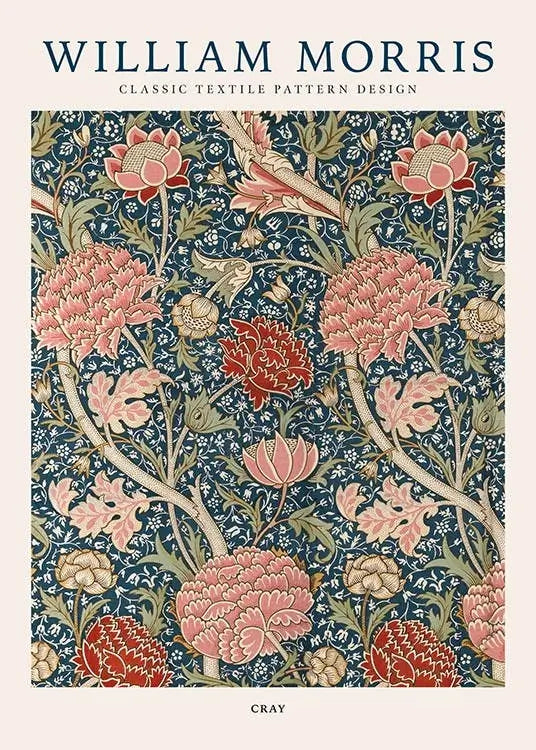
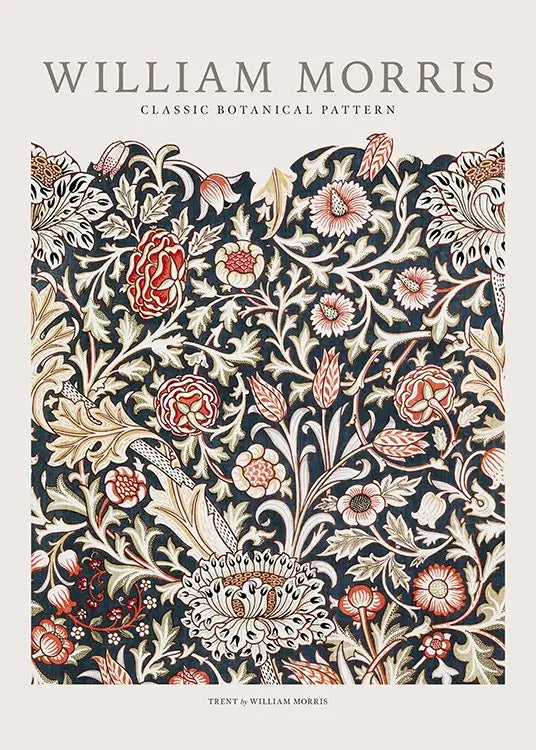
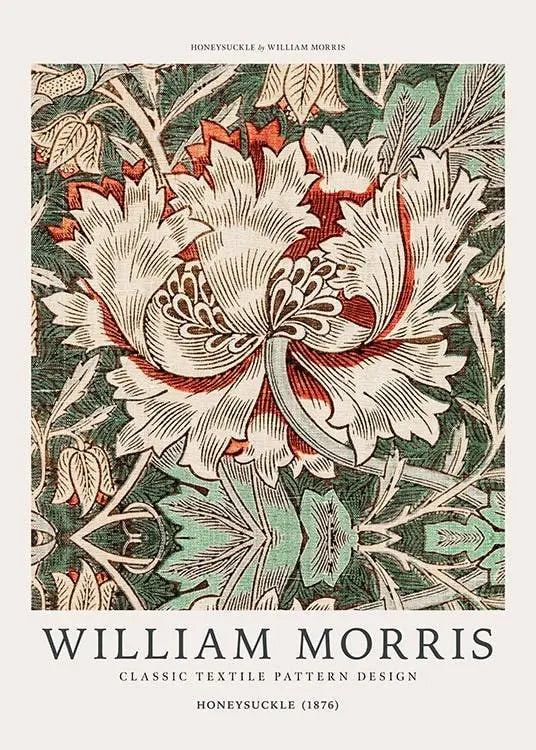
"Vid de madreselva"
"Honeysuckle Vine" (1883), el dulce aroma de la madreselva debe ser uno de los mayores placeres de la naturaleza. Inmortalizada por May Morris, la hija de William Morris, en este diseño de 1883, Honeysuckle es un patrón fluido y complejo que imita la tendencia de la planta a trepar y enredarse.
"Ramas de sauce"
'Willow Bough' es uno de los diseños de papel tapiz más duraderos de William Morris, en producción continua desde 1887. El patrón consiste en ramas de sauce que forman un patrón de ramas diagonales sobre el fondo liso.
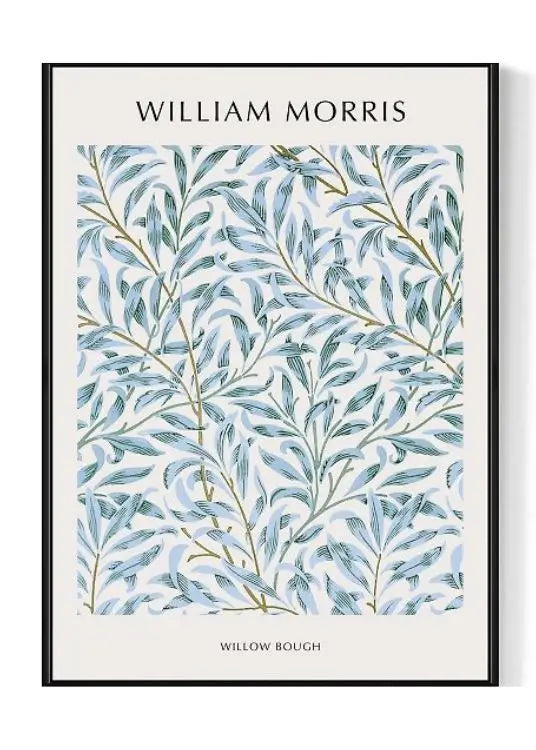
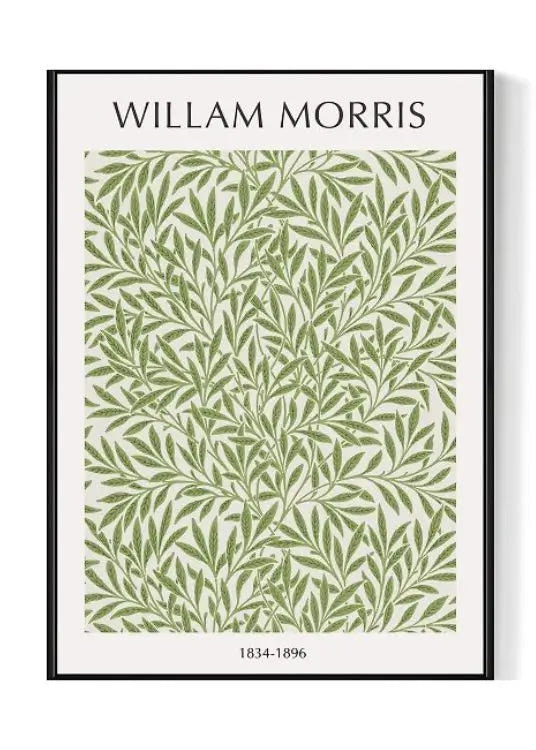
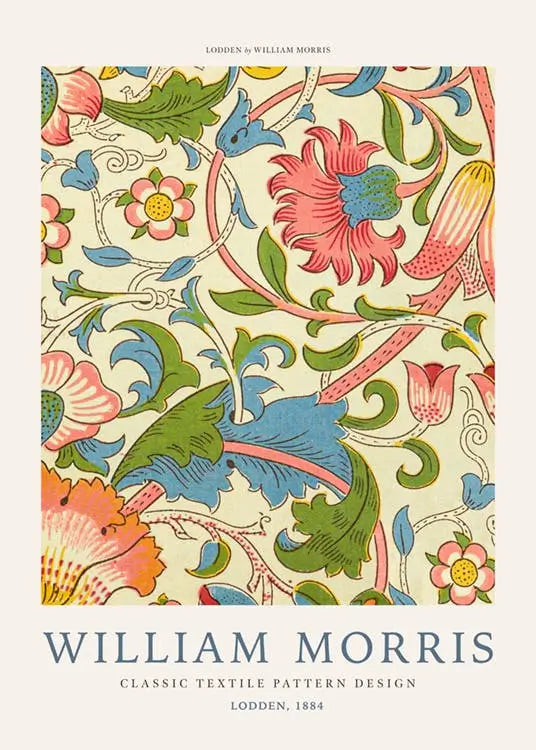
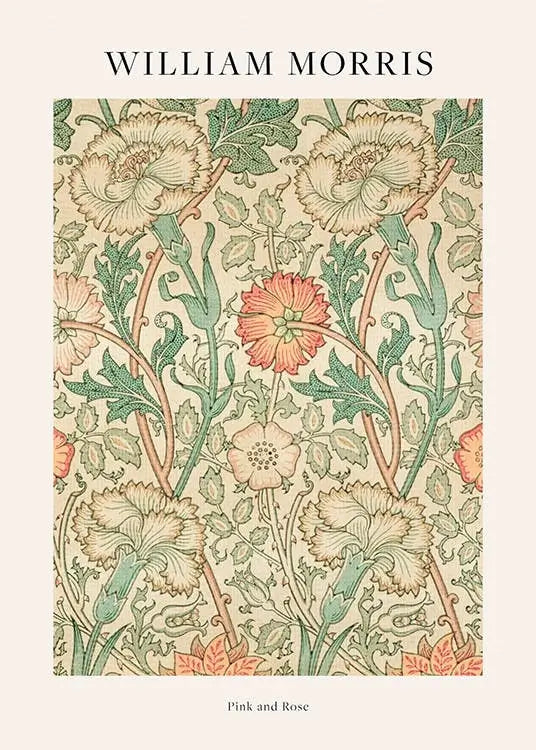
"Rosa y rosa"
"Rosa y rosa", de alrededor de 1890, es típica de su estilo tardío, que se caracteriza por el naturalismo y un patrón repetitivo claramente articulado.















